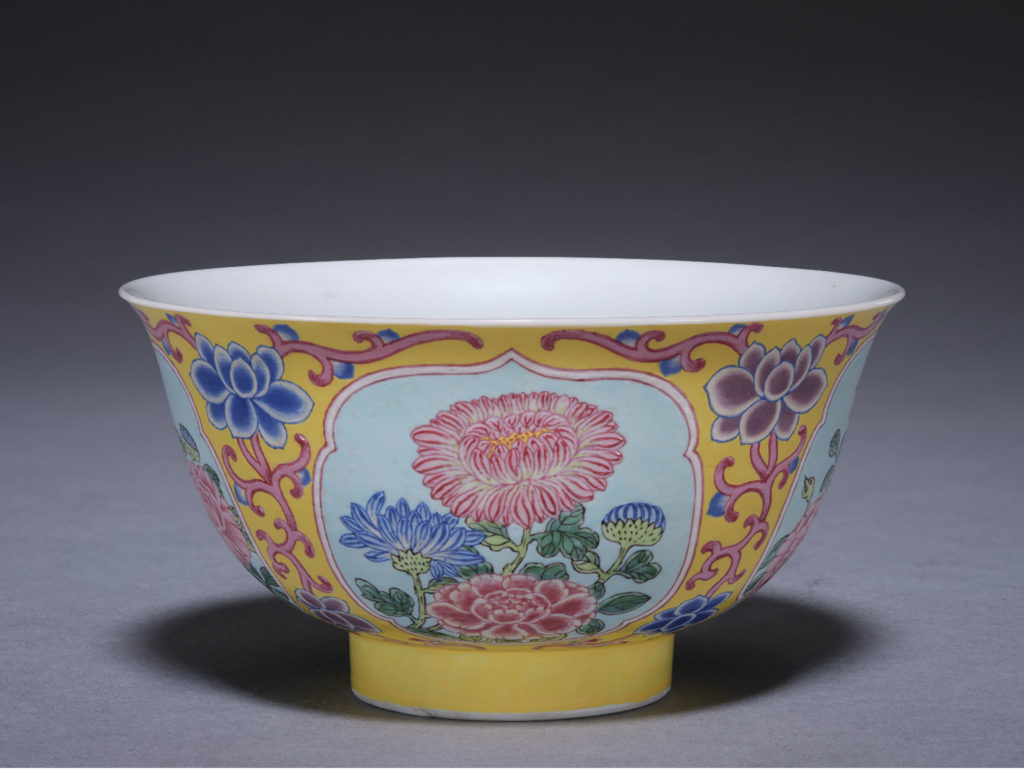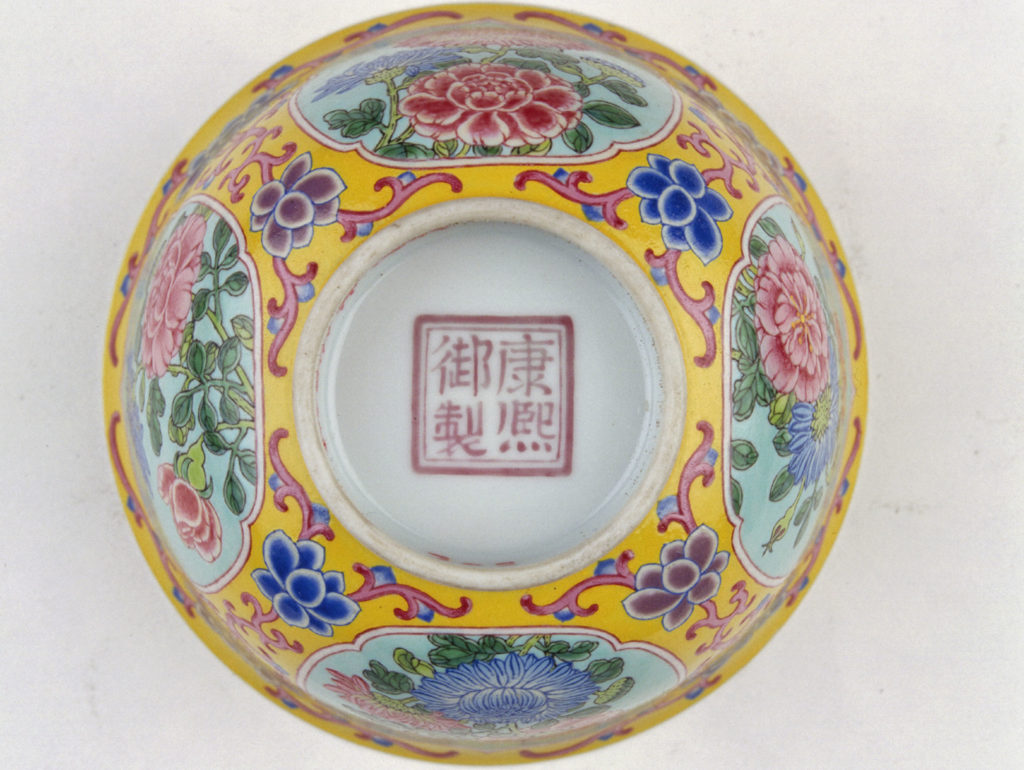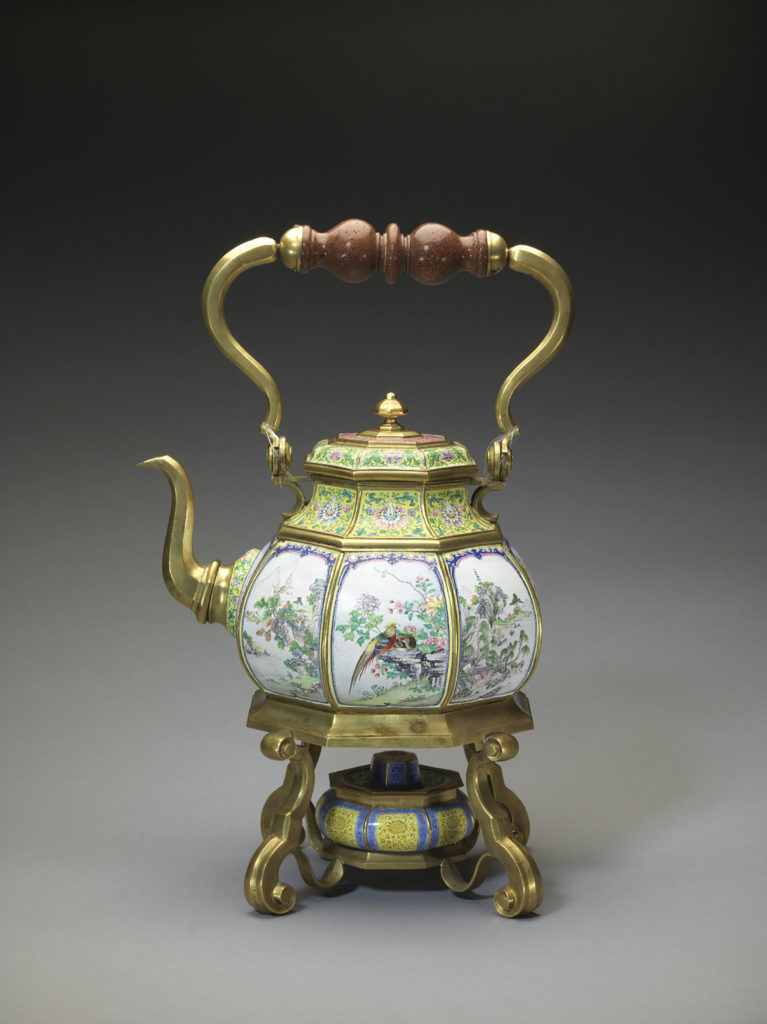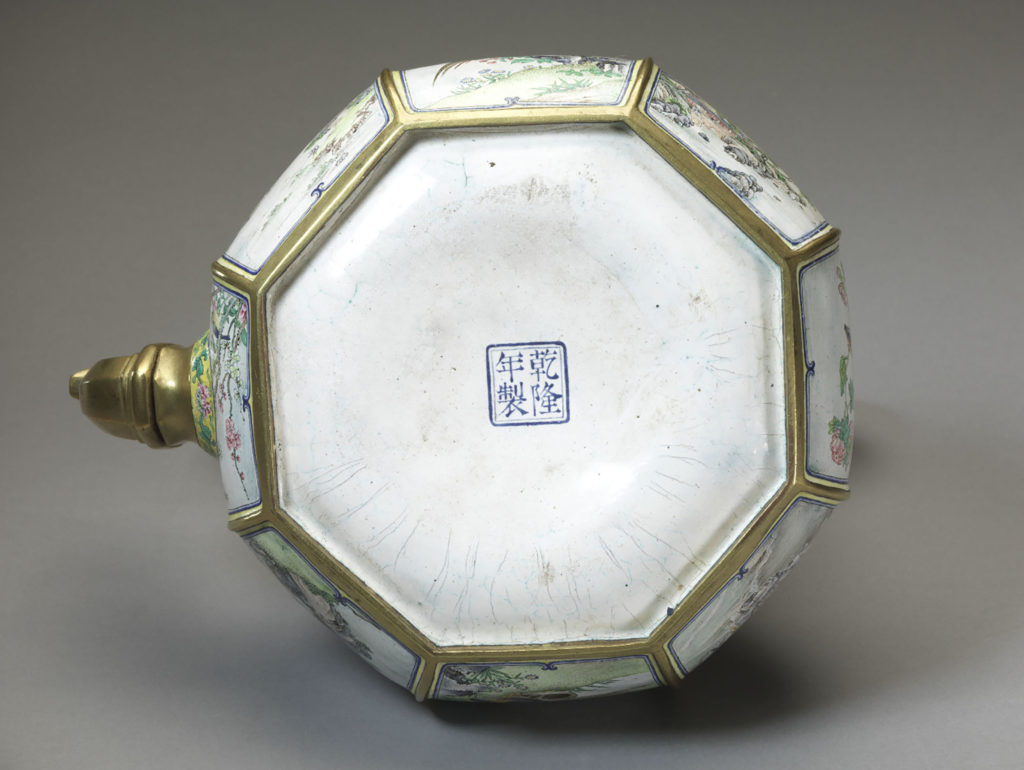Enamel originated in the West. In 1719, the French Jesuit missionary Jean Baptist Gravereau (1690–1762) arrived in Beijing. Together with the Qing court painter Giuseppe Castiglione (1688–1766), they improved the techniques for enamel painting on porcelain. The floral design on yellow ground first emerged during this period. Painted enamelware was distinct among the Qing imperial family’s porcelain ware for personal use and was considered the most exquisite form of overglaze decoration. Very few pieces circulated as they were only successfully made during the later years of the Kangxi period, making them extremely rare.
Enamellers
Enamel originated in the West. In 1719, the French Jesuit missionary Jean Baptist Gravereau (1690–1762) arrived in Beijing. Together with the Qing court painter Giuseppe Castiglione (1688–1766), they improved the techniques for enamel painting on porcelain. The floral design on yellow ground first emerged during this period. Painted enamelware was distinct among the Qing imperial family’s porcelain ware for personal use and was considered the most exquisite form of overglaze decoration. Very few pieces circulated as they were only successfully made during the later years of the Kangxi period, making them extremely rare.






